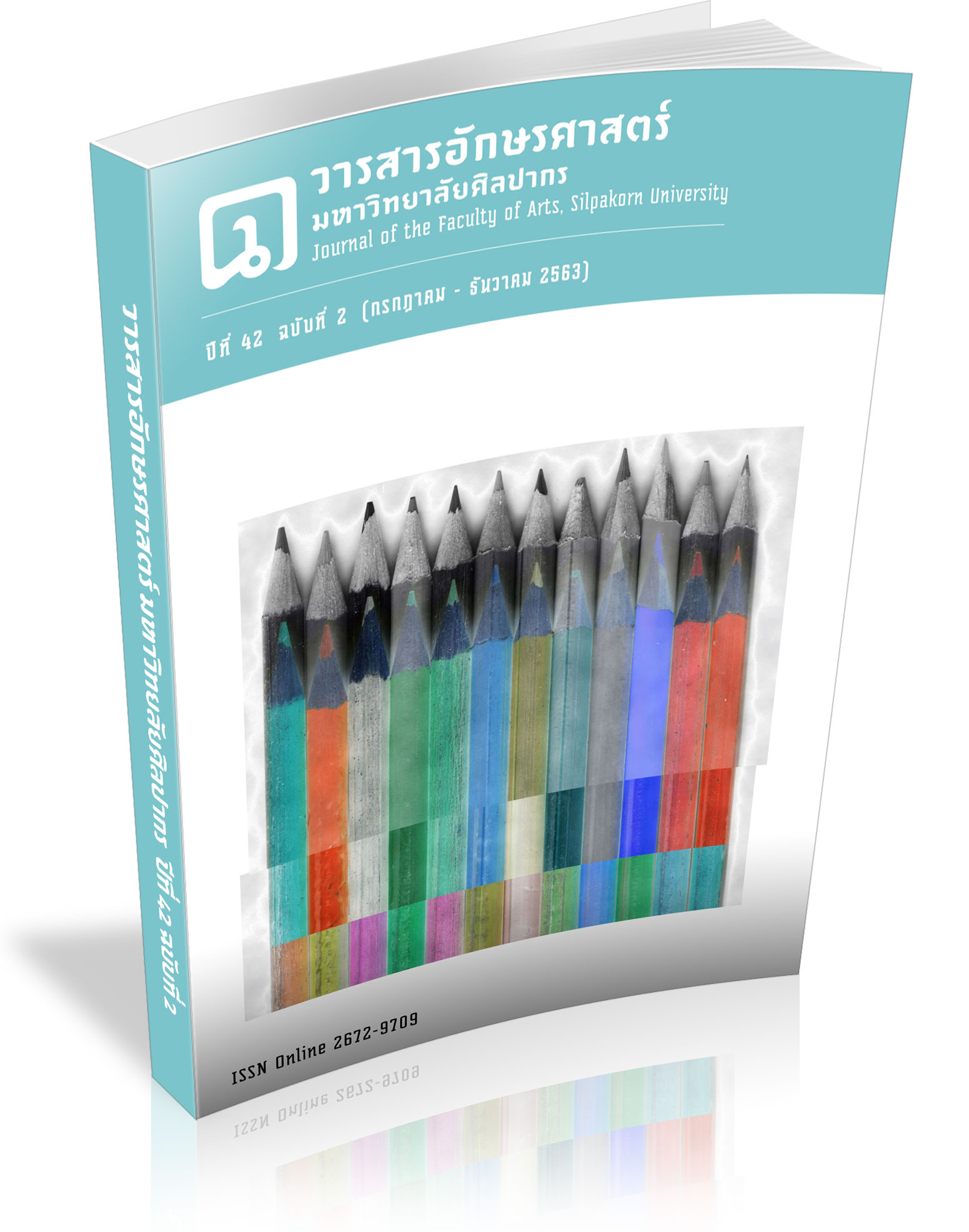Representations of Thai Women through Linguistic Devices in the discourse of the Three Seals Law in the Law on Husband and Wife
Keywords:
representation, women, Three Seals Law, The Law on Husband and WifeAbstract
The objectives of this paper are to study the representation of “Thai women” that are presented through the discourse of the Law on Husband and Wife in the Three Seals Law. The researcher collected data from the Law on Husband and Wife of the Royal Institute edition of the Three Seals Law, inclusive of 141 Sections. The results show that the content structure of the Law on Husband and Wife in the Three Seals Law consists of two main structures, namely Act Announcement, which is the same in every verse, and the nature of the case of the Law on Husband and Wife consists of 12 cases. The main content describes three main parts, namely 1) legal marriage conditions, 2) property between husband and wife, and 3) termination of marriage. The creator of the Law on Husband and Wife has used three language strategies to convey meaning: word choice, metaphors, and sentences. With the analysis of linguistic devices,” the representation of the Thai women can be divided into two types: the representations of good women, and the representations of bad women. That is to say, the good women were those who were well behaved within a set of “independent power” of the husband and the parents, while the bad women were those who violated the said set of rules.
Downloads
References
Bandhumedha, N. (2011). Thai Grammar. 6th ed. Bangkok: Chulalongkorn University. (In Thai)
Chaisaengsukkun, ph. (1985). Family law Comparison of Mangrai Customary Law and the Three Seals Law. Bangkok: Thammasat University. (in Thai)
Eamanondh, J. (2006) A study of discourse about people with HIV/AIDS in Thai society using the Nexus Analysis approach. Bangkok: Faculty of Arts, Chulalongkorn University. (in Thai)
Fairclough, N. (1995). Analysing discourse: textual analysis for social research. London: Longman.
Huntrakul, P. (2003).Thai women in the Three Seals Code : from matriarchy to subordination. Journal of the faculty of Arts, Silpakorn University. 32 (1), 247-334. (in Thai)
Noyunsan, A. (2000). The legal status of women in Lanna society 1839 2442: a case study of the relationship between husband and Wife. Masters Dissertation, M.A. in Laws, Faculty of Law, Thammasat University, Thailand. (In Thai)
Office of the council of state .(2004). 200 years the Three Seals Law. Bangkok: Office of the council of state. (in Thai)
Office of the National Culture Commission. (1992). Three seal laws and Thai society. Bangkok: Office of the National Culture Commission. (in Thai)
Office of the Royal Society. (2007). Three seal laws. Bangkok: Office of the Royal Society. (in Thai)
Panpothong, N. (2013). Critical Discourse Analysis based on linguistics. Bangkok: Faculty of Arts, Chulalongkorn University. (in Thai)
Phakdeephasuk, S. (2018). The Relationship between Language and Identity and Ways to Study Thai. Bangkok: Faculty of Arts, Chulalongkorn University. (in Thai)
Prukpongsawalee, M. (2008). Going back on the Human Rights of Women. Bangkok: Office of the National Human Rights Commission of Thailand. (in Thai)
Royal Institute. (2003). Royal Institute Dictionary 1999. Bangkok: Nanmeebooks. (in Thai)
Van Dijk, T. A. (2008). Discourse and Power. New York: Palgrave Macmillan.
Downloads
Published
How to Cite
Issue
Section
License
ผู้เขียนบทความต้องยินยอมในข้อกำหนดต่าง ๆ ของวารสารก่อนส่งบทความตีพิมพ์




